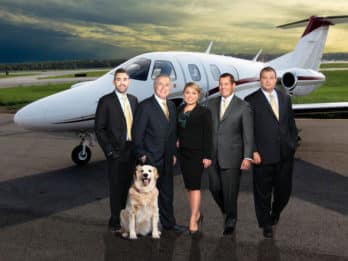REPEAT LESSON: Landing in thunderstorms is dangerous
0 CommentsREPEAT LESSON: Landing in thunderstorms is dangerous
American Airlines learned yet again that attempting a landing in a thunderstorm can be very tricky. This is the second such accident suffered by the carrier in 10 years when its crew landed in very heavy rain from a thunderstorm over the airport.
Here’s the problem. Thunderstorms generate very sharp changes in air current direction and velocity called wind shear. They also drop lots of rain in a short time making visibility poor and just coating the runway with sheets of water making tire traction and braking marginal. Even with the best auto braking and anti-skid, stopping distances are greatly increased. Pilots reacting to the bumps and windshear on approach add extra speed which further increases the landing distance and stopping distance as well. Put this all together and an overshoot is predictable, as occurred recently in Jamaica.
Fortunately, the aircraft left the runway at very slow speed so even though it broke into three pieces, the velocity was slow enough so injuries were not life threatening.
Interestingly, this airport had no safety areas beyond the runway ends to prevent damage to the aircraft, opting instead to use all the available real estate for the runway. Had the required 1,000 foot safety areas been in place beyond the 8,900 foot paved surface, or had EMAS (porous concrete that slows aircraft about to leave the runway) been installed, this airplane likely would have been towed out intact and no one would have received injury. One day, all airports that receive commercial service will install such safety features but until then, these accidents will continue. At this airport not only was there no safety area, there was an abrupt drop-off from the runway edge to the adjacent road and beach below, which broke the airplane that otherwise would have likely remained intact. The airport approach light system was incomplete due to a month long outage which, had it been working, would have assisted the crew in making a stabilized approach under the adverse weather conditions.
Bottom line, every pilot should once again be reminded that landing in a thunderstorm is a chancy proposition, especially on an island runway at night in very heavy rain and windshear. Holding for 20 minutes until the rain subsided would have been a better choice. There simply is no substitute for a stabilized approach and without it, landings become an unpredictable event.
American Airlines should lobby very hard for safety areas or EMAS at all airports it serves. It should also remind its flight crews that landing long and fast in the rain at night leaves very little margin left if the airplane can’t stop. All aboard this flight were very lucky.
– Arthur Alan Wolk




